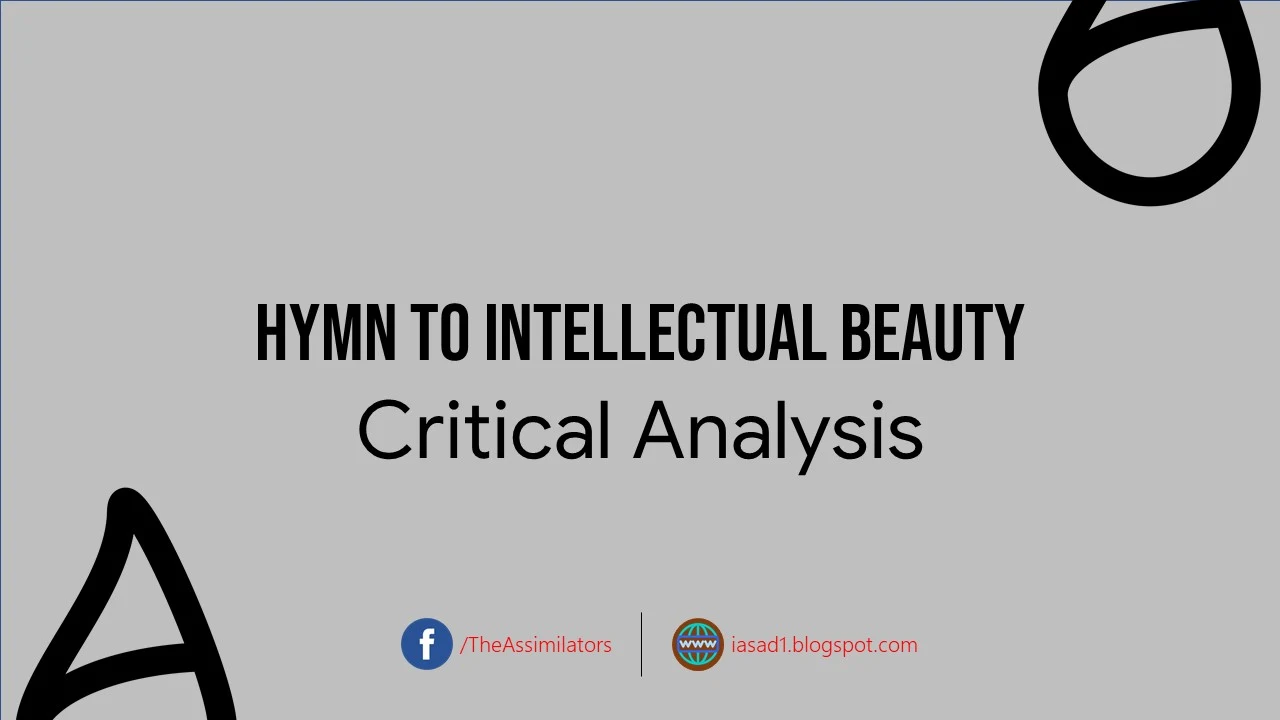General Information
Hymn to Intellectual Beauty is yet another famous poem written by Shelley. The poem is said to be composed in 1816 with his wife, Mary Shelley and Lord Byron in Switzerland. Shelley sent the first draft to his friend, Leigh Hunt but he lost it. Therefore, Shelley had to rewrite the draft to be published in Hunt's Examiner in 1817. The poem tries to find the lovely Spirit of Beauty which, according to Shelley, was worthy to be worshipped.
Development of Situation
The poem begins with the declaration of a strange power that roams around, unnoticed, entering and leaving humans. The addressor asks from the Spirit that where is it gone and why it has abandoned them? Then the poet disapproves his own question because the rainbow appears and then disappears. The question is not answered by the unknown. Yet Man has tried to find it in "Demons, Ghosts and Heaven". Then the poet asserts that intellectual beauty can make people immortal. Without it, the fear of death shall rule the world.
The poet, in his boyhood, tried to find spiritual beauty in ghosts but as soon as he was touched by the spirit of intellectual beauty, he was filled with joy. He declared,
I vow'd that I would dedicate my powers
To thee and thine: have I not kept the vow?
The poet holds a firm belief that the spirit shall liberate mankind from the state of slavery. He is hopeful that the spirit shall make his life peaceful. The intellectual beauty has made him learn to fear himself and love mankind.
Themes
The only dominant theme of this poem is Beauty. Shelley has treated beauty differently. We perceive beauty as something that is felt by all of our five senses. Plato, in his Symposium, declared Beauty as a metaphysical object that exists independently in our concrete world. While Plato also advocated a gradual attainment of true beauty. Shelley, on the other hand, believes that beauty can be felt through its earthly presence, only by the use of imagination. He rejected philosophy and metaphysics as a means to connect to true beauty. He is of the view that beauty is felt and its source remains unknown.
Figurative Analysis
The poem is a continuous personification in which the poet has given the qualities of humans of relieving the misery of humans. Shelley even elevates the function of Intellectual Beauty above the level of personification. Due to the incision of the word "Hym" in the title, the Intellectual Beauty has risen to a divine power.
There are numerous similes in the poem highlighting the capability of intellectual beauty directly and indirectly. For instance, the penetration of intellectual beauty is compared to "the summer wind" and "moonbeams".
Setting and Imagery
There is no particular setting of this poem since a spirit can roam here and there without any regard to a specific place. But Shelley was marvelled by the height of the Alps which compelled him to write a poem as a dedicated worshipper of the (intellectual) beauty. The images used in this poem are vivid and can easily make us feel the penetration of the Spirit of Intellectual Beauty from a tree to a singing bird, sitting on the branch of that particular tree. The images may include like, "hues and harmonies of evening", "clouds in starlight widely spread", "wax and wane in lovers' eyes" and "winds are wooing".
Structural Analysis
The poem is composed of eighty-four lines. It is further divided into seven stanzas of twelve lines each. The rhyme scheme of this poem is ABBAACCBDDEE. While the rhythmic pattern is iambic pentameter for longer lines and iambic tetrameter for shorter lines.
Conclusion
Hymn to Intellectual Beauty is a poem of personal reflection of an intellectual power that enhances the beauty (of Nature) through imagination.
Sources and Suggested Readings
- https://www.poetryfoundation.org/poems/45123/hymn-to-intellectual-beauty
- https://owlcation.com/humanities/Analysis-of-Poem-Hymn-To-Intellectual-Beauty-by-Percy-Bysshe-Shelley
- https://poemanalysis.com/percy-bysshe-shelley/hymn-to-intellectual-beauty/
- https://www.cliffsnotes.com/literature/s/shelleys-poems/summary-and-analysis/hymn-to-intellectual-beauty
- https://en.wikipedia.org/wiki/Hymn_to_Intellectual_Beauty
- Lectures of Sir Saffi


